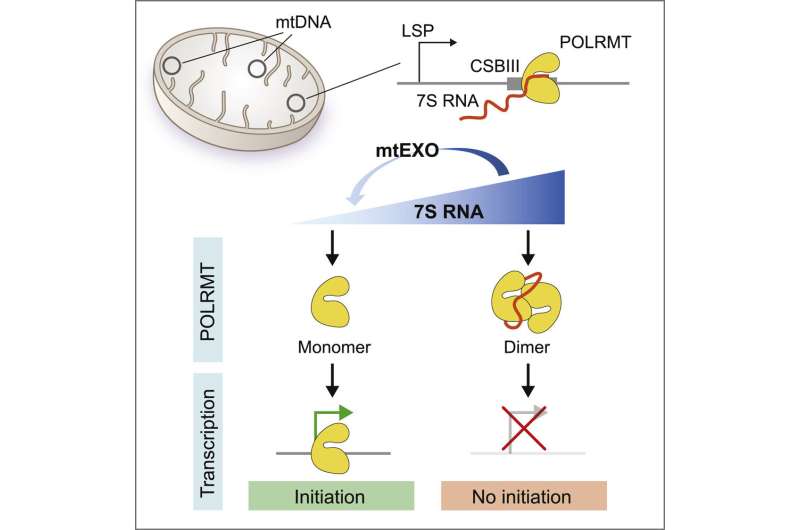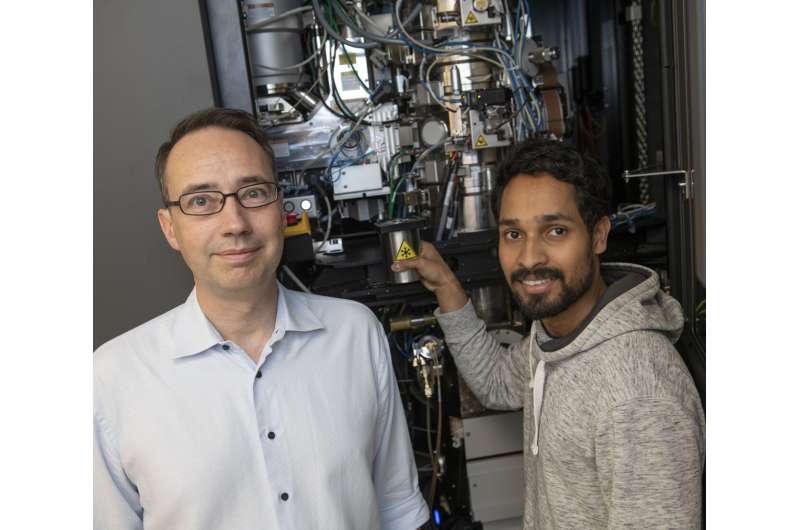The non-coding 7S RNA regulates gene expression in human mitochondria

A new study published in the journal Cell shows that a non-coding RNA molecule regulates mitochondrial gene expression in human cells. The work results from a collaboration between the University of Gothenburg and Karolinska Institutet, both Sweden, and the University of Cologne, Germany.
Mitochondria are the powerhouses of cells and are crucial for converting energy from our food into the form of energy required for various cellular functions. A peculiar aspect of mitochondria is the existence of a separate mitochondrial genome, which, when damaged, can cause serious diseases, affecting high-energy tissues like the brain and heart. Hence, it is crucial to study how mitochondrial gene expression is regulated to—in the long term—find ways to control this process with therapies.
Human mitochondrial 7S RNA belongs to a large family of non-coding RNA molecules essential for proper development in mammals. It was previously known that levels of mitochondrial 7S RNA vary depending on the metabolic needs of the eukaryotic cell, but the molecular basis and functional implications for these changes were unknown. In their work, the scientists developed methods to study the effects of 7S RNA both on purified proteins and mitochondrial gene activity in cells.

"The most exciting thing about the study is that we identify a completely new mechanism for regulation of mitochondrial activity. Our findings reveal the function of 7S RNA, a molecule identified already 40 years ago. Despite 7S RNA being abundant and frequently measured in studies of mitochondrial function, its physiological role has remained an enigma until now. We are thrilled that we, in collaboration, could determine a cryo-EM structure that shows the probable mechanism for how 7S RNA inhibits mitochondrial gene activity," says Xuefeng Zhu. Xuefeng, and Xie Xie, both at University of Gothenburg, share the first authorship of the article with Hrishikesh Das at Karolinska Insititutet.
Non-coding RNA molecules play an important role in regulation of various processes in the nucleus, but a defined role in regulation of mitochondrial function has not previously been reported. "Our finding reveals a new and physiologically relevant level of regulation in human mitochondria. The challenge now is to understand how 7S RNA levels are fine-tuned in response to the metabolic needs of the human cell. We have ideas and will try to explore them in the years to come," says Xie Xie, who performed the work as a postdoctoral student at University of Gothenburg, but now works as a scientist at Pretzel Therapeutics, a start-up developing new ways to address mitochondrial dysfunction.
"This is a new principle for regulating mitochondrial activity and future therapies targeting 7S RNA production, can be valuable," says Maria Falkenberg, professor at the University of Gothenburg, who led the study together with Martin Hällberg at Karolinska Insititutet. However, the practical implications of the work will take years to explore. "These are early days, but this will open a new field in mitochondrial research" says Martin Hällberg.
More information: Xuefeng Zhu et al, Non-coding 7S RNA inhibits transcription via mitochondrial RNA polymerase dimerization, Cell (2022). DOI: 10.1016/j.cell.2022.05.006
Journal information: Cell
Provided by University of Gothenburg





















